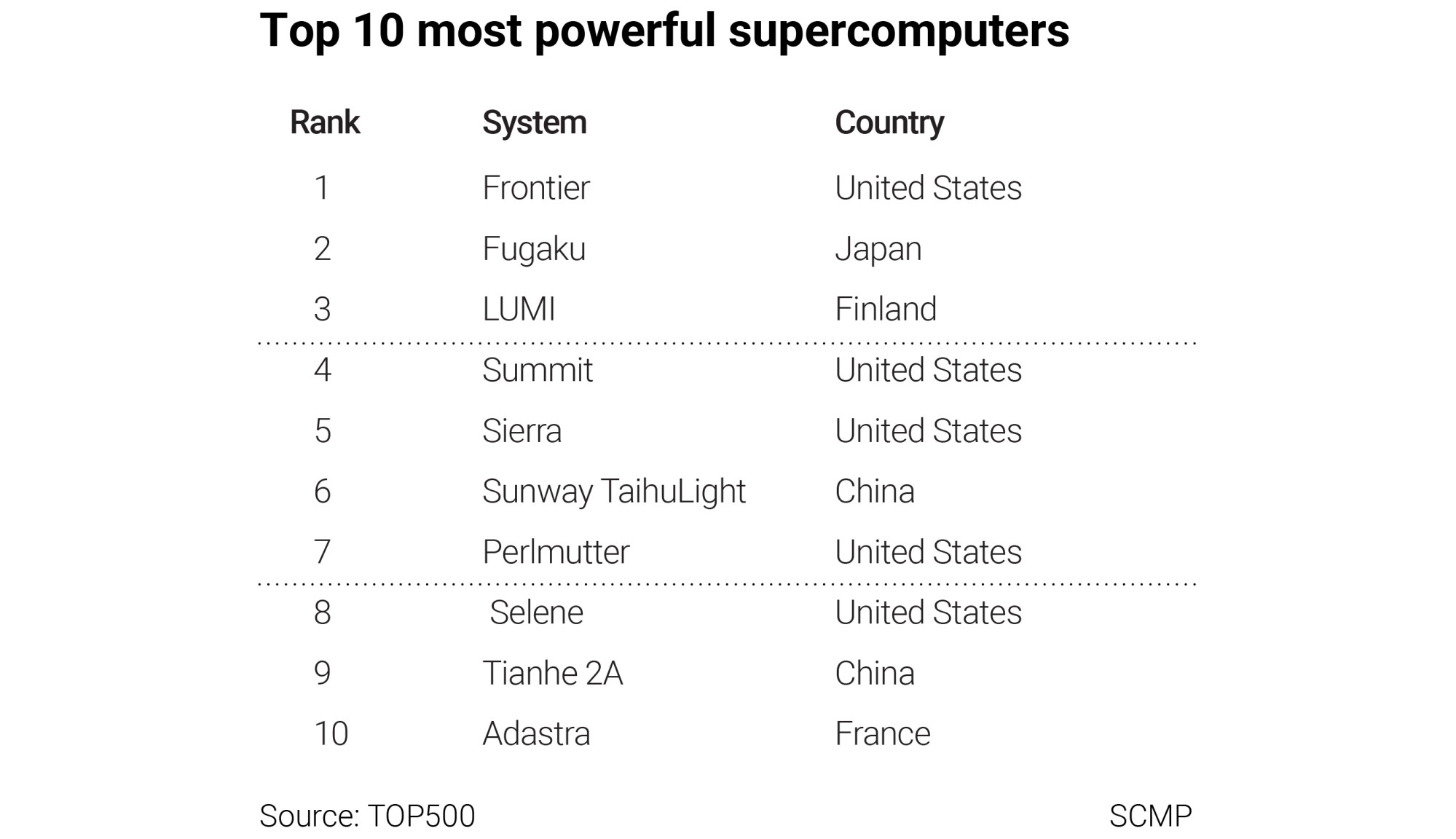How Asia Pacific is Leading the Way in Quantum Cryptography Advancements
SOURCE: HTTPS://CITYLIFE.CAPETOWN/
NOV 06, 2023
How China’s national computing network will be a game changer
SOURCE: SCMP.COM
JUN 16, 2022

With data generation at an all-time high, nations now rely on high-speed computational processing capacity. From scientific research and engineering to logistics management and manufacturing, and from business processes and product development to military hardware, computing power has become a key factor in a state’s technological growth.
As computing power and computational devices become economically and strategically relevant, countries are dedicating both scientific and financial resources to the domain. Scientific and military applications that need better computational capacities are the need of the hour.
Simply put, robust and safe computational data models are integral to the smooth functioning of critical sectors such as the military and finance that rely on data safeguards. With the private sector playing a bigger role, the global computing landscape has become a heavily contested field with multiple state and non-state actors.
China’s rise as a global computing powerhouse can be traced back to 2001 and the state’s emphasis on research to develop its own advanced systems. Beijing’s actions have focused on leveraging its home-grown resources, along with private-sector investment, to produce top-class research and development, and machines with globally competitive computing capabilities.
Although a late entrant to the high-performance computing field, China now leads the world with more than 180 supercomputers. It has around 35 per cent of the world’s top 500 most powerful supercomputers and is quickly building a network of national supercomputing centres.

China has also reportedly launched as many as three exascale computers – super computers capable of handling 10¹? operations per second. Its 14th five-year plan says it plans to build 10 exascale computing systems by the end of 2025.
In quantum computing, China’s programme only started in 2008. Yet, it has more than caught up with the West and now has two of the world’s fastest quantum computers.
The pace at which China has adopted quantum computing technology is truly exceptional. The unveiling of Zuchongzhi 2 and Jiuzhang 2 has the country claiming a “quantum advantage” in both the superconducting qubit and photonic system technologies.
Its state-driven approach, coupled with extensive industry-academia collaboration, has helped China leapfrog the progress elsewhere, such as in the United States and Europe. This, coupled with increased domestic R&D, has provided a leg-up for the state in bypassing export controls and import restrictions to continue to build more advanced computing systems.

A worker monitors the Sunway TaihuLight supercomputer at the National Supercomputer Centre in Wuxi, in eastern China’s Jiangsu province, in 2020. The administration of US President Joe Biden has added seven Chinese supercomputer research labs and manufacturers to a US export blacklist. Photo: Chinatopix via AP
Recently, the Cyberspace Administration of China unveiled an ambitious national computing network initiative to address regional technological imbalances and develop a connected computing grid infrastructure across the country.
Based on the concept of “Eastern Data and Western Computing”, the project proposes setting up clusters of computing resources in China’s less technologically developed western region, to form an integrated network with data centres in the more technology-oriented eastern cities. This is in the hope of improving regional development and increasing investment and opportunities in the west, which lags behind economically.
The project involves setting up 10 data centre clusters and eight computing power hubs. The computing power hubs are envisioned to spread out across the mainland to ensure improved connectivity.According to Xiang Ligang, director general of the Information Consumption Alliance, a Chinese telecoms industry association, “The establishment of national integrated computing hubs will improve efficiency in the use of computing resources, boost the free flow of data and promote the high-quality development of the digital economy.”
Chinese tech conglomerates, such as Tencent, Huawei and Alibaba have agreed to integrate their data computing architecture with the proposed network.
The national computing network is an ambitious project aimed at efficiently using the existing infrastructure. While regional development may be the broad goal, the project has underlying strengths that can help Beijing achieve other objectives.
First, the project has an environmental angle. With China looking to cut its carbon emissions in the coming decade, an interconnected network offers a chance to better use the country’s renewable energy sources, which are concentrated in the northwestern region.
Given that eastern provinces are better developed, demand is higher for electricity, creating an overreliance on fossil fuels in those regions. The existing infrastructure cannot provide adequate transmission lines from the west to meet the east’s energy needs.
Building computing clusters in the west can help China better use its green energy resources, reduce power consumption and cut transmission losses. At the same time, this can help Beijing achieve its carbon neutrality goals.Second, the project looks to build a foundation to improve China’s digital economy infrastructure. With many areas increasingly reliant on data digitisation, a national computing network will also look to incorporate an integrated data centre system. Along with data handling and storage, the network can help bring more economic sectors into the digital fold and increase the outreach of many industries.
Finally, there is the military and national security aspect. In an era of cyber and information warfare, computing power and capacity is a tool to mitigate risks. Advanced computing systems are being used to create wartime simulations and better understand military strategies.
Locating computing facilities at strategic areas closer to China’s borders (in the northern and western regions) can also help with real-time analysis of critical military intelligence. Amid military modernisation reforms, the People’s Liberation Army will get a huge strategic boost with a dedicated computing infrastructure equipped with military applications.
Computing power remains a critical weapon in China’s technological arsenal, and this plan can only strengthen its technology infrastructure.
Arjun Gargeyas is a research analyst with the High Tech Geopolitics Programme at the Takshashila Institution

+ FOLLOW
Arjun Gargeyas is a research analyst with the High Tech Geopolitics Programme at the Takshashila Institution, a public policy think tank in Bangalore. His areas of focus include quantum technologies, semiconductors and technical standards
LATEST NEWS
WHAT'S TRENDING


Data Science
5 Imaginative Data Science Projects That Can Make Your Portfolio Stand Out
OCT 05, 2022

SOURCE: HTTPS://CITYLIFE.CAPETOWN/
NOV 06, 2023
SOURCE: HTTPS://WWW.SCIENCEDAILY.COM/
OCT 27, 2023
SOURCE: HTTPS://WWW.SCIENCEDAILY.COM/
OCT 26, 2023
SOURCE: HTTPS://THEQUANTUMINSIDER.COM/
SEP 28, 2023
SOURCE: HTTPS://TECHMONITOR.AI/
OCT 03, 2023
SOURCE: HTTPS://SCITECHDAILY.COM/
AUG 29, 2023
SOURCE: HTTPS://WWW.DIGITALJOURNAL.COM/
AUG 26, 2023
SOURCE: HTTPS://WWW.TECHTIMES.COM/
AUG 16, 2023